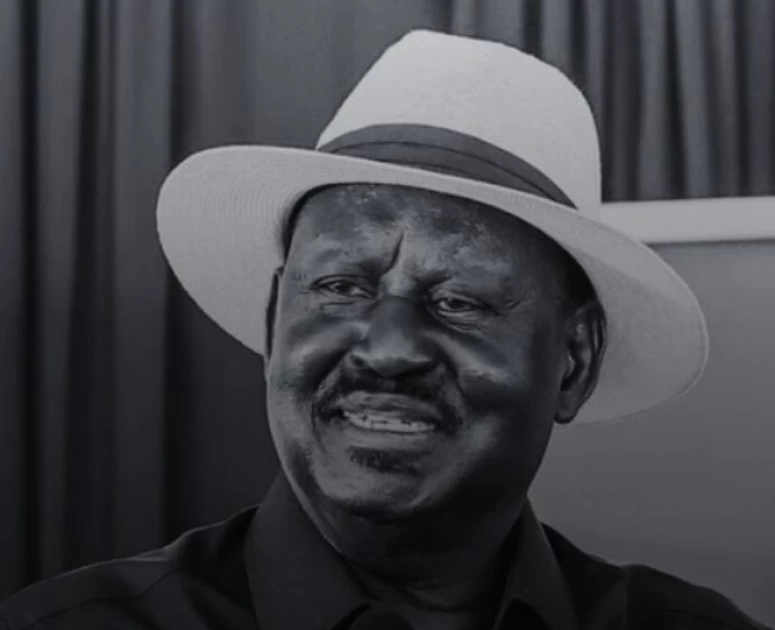The unforgettable 72 hours that buried Raila Odinga


Audio By Vocalize
It began as a whisper, a disbelieving murmur on the morning of Wednesday, October 15, 2025, A text message, a hushed conversation, a trending topic with a question mark. By the time many Kenyans reached their offices, the whisper had become a scream, confirmed by the stark, unforgiving ping of a breaking news on phones, radios and televisions. The impossible was true.
A grief so visceral it felt physical ripped across the
nation. In offices, markets and matatus, work ceased. There were no words, only
a collective, stunned silence. Who was to pull a first tribute? The energy had
been sapped from the very soul of the country.
The man who had been a constant, often turbulent but always
formidable force in Kenyan politics for decades was gone. Raila Odinga, the
former Prime Minister, the champion of democracy, the people’s defender had
succumbed to a cardiac arrest after collapsing during a morning walk in Kochi,
India, some 4,580 kilometres away.
The confirmation of his death was followed by a revelation
that set a national clock ticking: in his will, he had wished to be laid to
rest within 72 hours. For a figure of his stature, a man too large for any
conventional container, 72 hours felt impossibly short. But a will was a will
and it had to be respected. What followed was a monumental, chaotic and
profoundly emotional race against time, tributes flowing from all corners, a
state-managed sprint that laid bare the raw, unvarnished love of a nation for
its fallen hero.
President William Ruto, in a gesture that transcended
political rivalry, immediately ordered a state funeral. A heavy-hearted
President Ruto suspended all public events. The government declared a seven-day
mourning period, with flags at half-mast and in an unprecedented move, the
suspension of all sporting activities, an honour not even accorded to former
presidents. It happened when Raila Odinga died.
The state machinery was mobiliseed with wartime urgency. A
national funeral committee was formed and a high-level delegation of over 30
government officials was dispatched aboard a chartered Kenya Airways flight.
This was a first of its kind, a mission of grief, not statecraft. The flight,
KQ202, took off for Mumbai at exactly 6:30pm, its mission to bring their son
home.
As the nation held its breath, the world watched. Flight
KQ202 became a digital ghost, its path a thin blue line across the Indian Ocean
tracked by a global audience. On Flightradar24, it climbed to become the
most-tracked flight in the world, with over 7,000 people monitoring its
progress, a silent, global vigil for a Kenyan giant.
Kenya Airways announced that upon entering Kenyan airspace,
the flight KQ203 would be renamed RAO001, in honour of the man’s initials.
Where on earth had that happened before? For Kenya, Raila Odinga was more than
a leader.
Royal Media Services, having embedded a reporter with the
delegation, broadcasted live pictures from the plane before take-off. The
images were devastating. Tough, seasoned government officials, the architects
of state policy, were reduced to tears, their grief mirroring that of every
citizen watching at home. The mood was shared, a national communion of loss.
On the morning of Thursday, October 16, 2025, Kenya was
cold. A palpable shroud of shock and sorrow hung over Nairobi and the whole
country. All roads led to Jomo Kenyatta International Airport (JKIA). President
Ruto led a sombre line of officials, but they were soon overwhelmed. Thousands
of ordinary Kenyans, from all walks of life, stormed the airport, breaching all
protocols in a tidal wave of collective mourning.
At exactly 9:30am, RAO001 touched down at JKIA. The ensuing
scene was one of primal, chaotic grief. People wept uncontrollably, swarming
the tarmac. All airport operations were halted, with flights diverted to
Mombasa and other airports in the neigbouring coutries.
For four hours, JKIA, the nation’s primary gateway, was not
an airport but a funeral parlour. The Kenya Airports Authority surrendered to
the moment, suspending operations until a fragile order could be restored.
The meticulously planned schedule was in tatters. The body
was to be moved to Parliament but the people had other plans. A massive,
impromptu convoy of mourners made the five-hour journey from JKIA to Kasarani
Stadium on foot, rendering Mombasa road impassable for hours. By the time the
procession arrived at 3pm, Kasarani was already filled far beyond capacity.
What happened next was a tragic, perhaps inevitable,
consequence of a love too vast to be contained. As the situation grew
increasingly fraught, police fired teargas and, horrifically, several gunshots
were heard. In the ensuing stampede as people scrambled for safety, three lives
were lost. The guns fell silent, leaving a nation mourning its hero now also
mourning for its own, the celebration of a life tragically marred by death.
With military in full control, the state funeral at Nyayo
Stadium the following day was a more organized but no less emotional, affair.
The stadium was a sea of solemn faces, a nation gathering to celebrate the man
they called Baba. Yet, even here, the sheer weight of numbers proved deadly,
with two more lives lost in a stampede.
In general, it was a successful day in Nairobi and from the
speeches done, a new anthem emerged for a nation in grief: 'Jamaica Farewell.'
The 1956 Harry Belafonte classic, known to be Raila Odinga's favourite song,
was suddenly heard everywhere, played on radio stations and sung in streets as
a heartfelt tribute.
On Saturday morning, a Spartan Kenya Air Force plane carried
the body of Raila Odinga on his final journey home to Kisumu. The planned road
procession from Kisumu’s airport to the stadium was wisely abandoned, the scars
of Nairobi still fresh. Helicopter airlifted his body to Jomo Kenyatta Stadium
in Mamboleo, where thousands had gathered from across the Nyanza region and
beyond.
The public viewing rolled on until 3pm, when the military
closed the process. Many were left disappointed, unable to view the body of
their hero one last time. Yet, they stood their ground, happy simply to be in
his presence, to pay their last respects to the man who, for them, was not just
a politician, but a symbol of their struggle and their hope.
The planned road processions to his rural home in Bondo was
abandoned. Instead, helicopter airlifted his body directly to the Opoda Farm, a
stark acknowledgement that the public’s passion could not be risked again.
And so, the nation’s long, painful sprint reached its final
mile on Sunday, October 19, 2025 at the Jaramogi Oginga Odinga University of
Science and Technology in Bondo.
Under the relentless equatorial sun, the dust of his
ancestral home settled on a gathering of giants. President William Ruto stood
shoulder-to-shoulder with dignitaries from across Africa and the world. They
were all there, not out of mere protocol but to bear witness to the end of an
era.
President Ruto's decision to grant a state funeral was a
masterful stroke of respect, a fitting tribute to the man he called his
‘political teacher’ and a deserved honor for a founding father of modern Kenya.
An act that was truly appreciated by all leaders and Kenyans at large.
From 9am to 4pm, the speeches flowed, a river of tribute,
politics and personal anecdote. They spoke of the fiery political warrior, the
steadfast democrat, the devoted father.
The crowd, a vast sea of sombre faces stretching to the
horizon, listened, wept and occasionally applauded. It was a final, seven-hour
eulogy for a man whose life could never be confined to a 72-hour burial, let to
a single speech.
In just 72 hours, Kenya had experienced a seismic shock. It
witnessed the full might of the state bow to the will of one man and the people
who loved him. It saw chaos and ceremony, dignity and tragedy, all intertwined.
The giant had rested and in his passing, he revealed the ungovernable,
passionate and often painful heart of the nation he fought so fiercely to
define.
The proof of his stature was in the airwaves. For days,
Kenya's media landscape was unified by a single subject: the life and legacy of
Raila Odinga, demonstrating a reach and influence that transcended all
platforms.
As the casket was lowered into the earth at Kang’o Ka
Jaramogi next to his father’s grave and the 17-gunshot salute went up, the
world seemed to hold its breath. The political stalwart, the symbol of
resistance, the beloved ‘Baba’ was finally at rest and the herculean task to
honour the will was complete. But in the quiet that followed, a single truth
echoed across the exhausted and grief-stricken nation: while they had managed
to bury the man in those few days, the colossal shadow he cast would loom over
Kenya for generations to come.

Leave a Comment